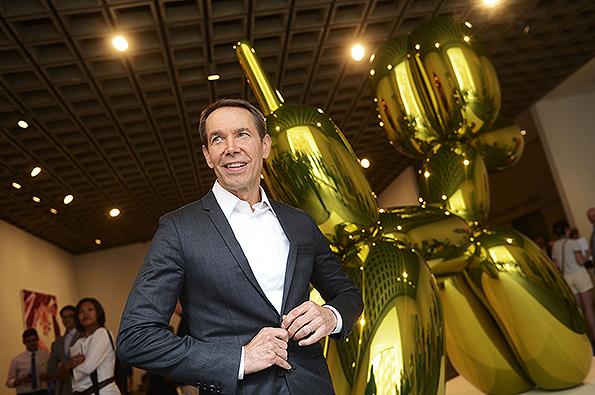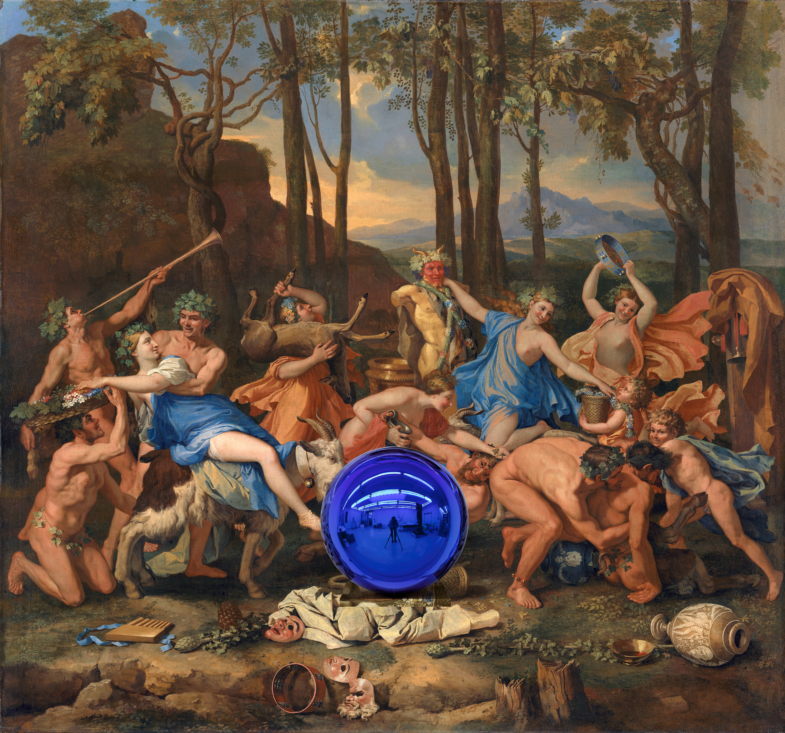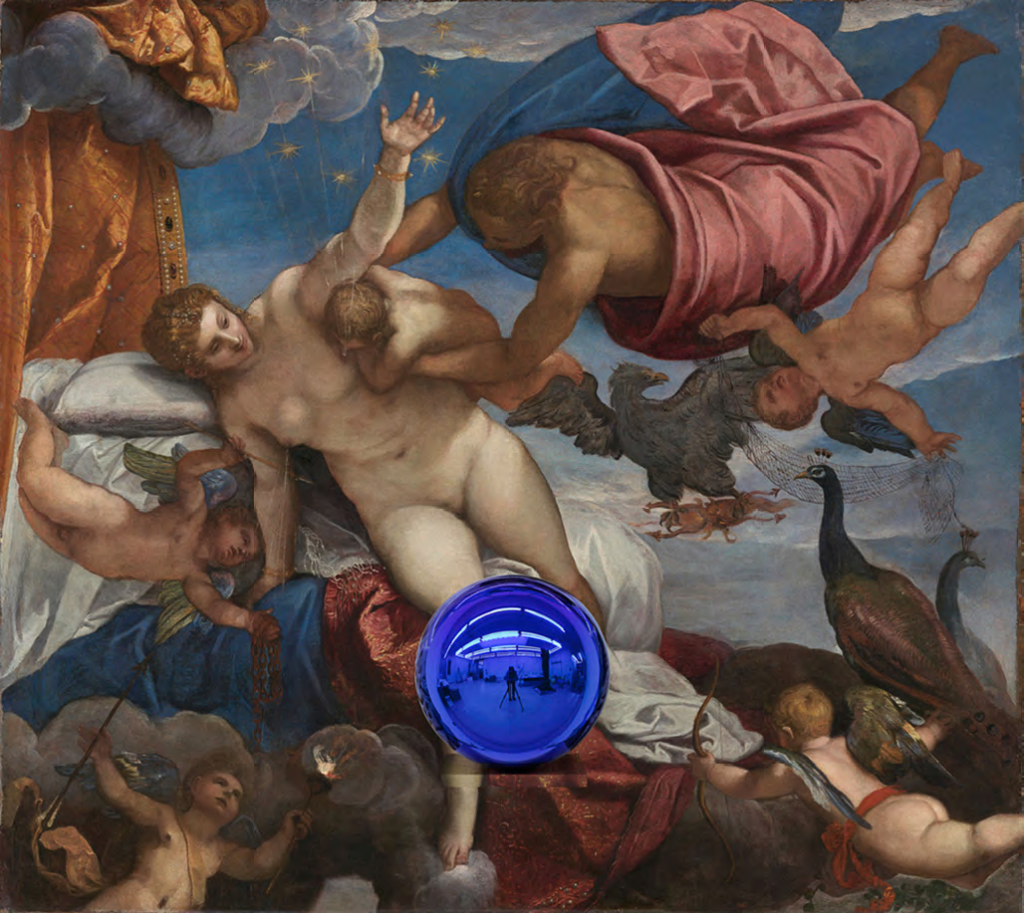Art World
Jeff Koons Radically Downsizes His Studio, Laying Off Half His Painting Staff
This marks the third round of layoffs in the painting department since 2015, sources say.

This marks the third round of layoffs in the painting department since 2015, sources say.

Julia Halperin &
Brian Boucher

One of the world’s most famous and successful artists, Jeff Koons has long run a round-the-clock studio to meet the demand for his multi-million-dollar artworks—a gargantuan operation that has brought to mind Henry Ford’s factory in boom times. But now, times are changing. Around 30 members of the painting staff at Jeff Koons’s studio were laid off last week, artnet News has learned.
The cutbacks—made last Tuesday, according to sources—reduce the number of painters employed by the studio from around 60 to approximately 30 people. Sources say those laid off include assistants who had worked at the studio for more than a decade, at least some of whom received no severance other than the rest of their final day’s pay.
This marks the third round of layoffs to hit the painting team since 2015. That year, Koons employed a formidable army of more than 100 painters to help complete his “Gazing Ball” series ahead of its debut at Gagosian Gallery. For the show, Koons repainted 35 art historical masterworks, including Manet’s Déjeuner sur l’Herbe and Leonardo da Vinci’s Mona Lisa, and added a blue mirrored ball to the surface of each canvas.

Jeff Koons Gazing Ball (Poussin The Triumph of Pan) (2014 to 2016). Photo ©Jeff Koons.
After the exhibition opened in late 2015, sources say, Koons reduced the existing painting staff by around 30 people. Another 15 to 20 painters on the night shift were let go around this time last year. At the time, reports surfaced that the night painters were in early discussions to unionize; we understand those plans have slowed to a halt after the layoffs, which made employees nervous to proceed.
Three sources confirmed the recent layoffs, but all declined to speak on the record because they had agreed to keep their dealings with the studio confidential and feared they might be sued for speaking out. One source said assistants were paid around $21 an hour; they were given a raise last year.

Artists work in Jeff Koons’ private studio in 2010 in New York City. Photo by Andrew H. Walker/Getty Images.
“Everyone there is basically treading water,” another source says. “You kind of expect the steady stream. Then… oh well.”
Multiple sources said the reason for the layoffs is that the studio is downsizing, in part because of lackluster sales of the “Gazing Ball” paintings.
A representative from Koons’s studio did not reply to a request for comment by publication time, nor did a spokeswoman for Gagosian. A staff member who answered the phone at the studio declined to comment.
In an interview tied to the “Gazing Ball” series’ debut in 2015, Koons told the Guardian that the works “are all handmade paintings, every mark on here has been applied by a brush.”
For years, Koons has operated one of the largest studio practices in the business. Ads for his assistants frequently appear on the New York Foundation for the Arts website. In 2015, the Real Deal reported that the artist spent $23.7 million to buy three adjacent sites in Hudson Yards, with the intention to leave his longtime Chelsea studio headquarters for the significantly larger Midtown site. (Currently, the studio remains in Chelsea.)
But these ambitious plans do not seem to have benefited the painting staff. Although Koons’s current exhibition at Gagosian in Beverly Hills includes several paintings from the “Gazing Ball” series, the artist appears to have turned his attention away from painting in recent months.
His latest high-profile project is a line of handbags made in collaboration with Louis Vuitton, and he has also ventured into virtual reality with a new artwork for the VR platform Acute Art. Additionally, visitors to New York’s Rockefeller Center this month will find a 45-foot-tall Seated Ballerina sculpture, which Koons had fabricated from mylar and inflated into a gigantic balloon.
Meanwhile, the artist continues to push the boundaries of fabrication, engaging in increasingly high-tech—and expensive—processes that range from CT scanning to custom CNC (computer numerical control) milling. One person who formerly worked in the paintings unit said that Koons preferred the digitally enabled processes because, ironically, he feels they allow him to create less space between himself and the finished product: “He never wanted to rely on people’s talent.”

Jeff Koons, Gazing Ball (Tintoretto The Origin of the Milky Way), (2016). © Jeff Koons, Courtesy of the Artist and Almine Rech Gallery.
By comparison, the role of a painting assistant is far more traditional (and low-tech). As former studio assistant John Powers described in an essay for T in 2012: “My job was simple: Paint by numbers. The most intricate sections required miniature brushes, sizes 0 and 00, their bristles no longer than an eyelash. The goal was to hand-fashion a flat, seamless surface that appeared to have been manufactured by machine, which meant there could be no visible brush strokes, no blending, no mistakes.”